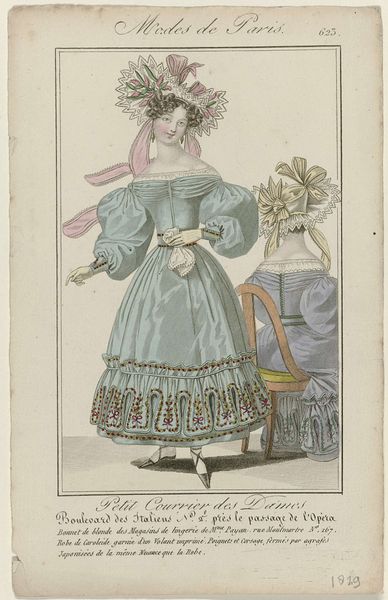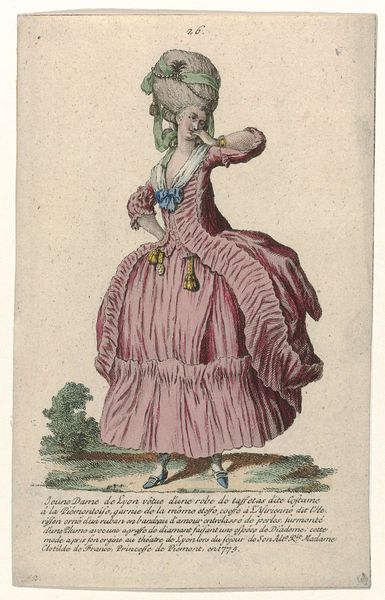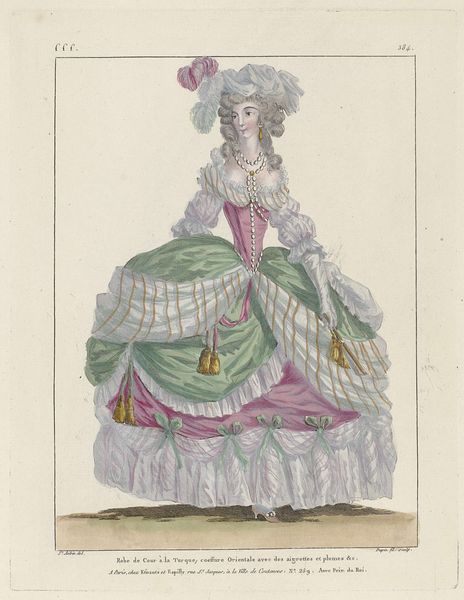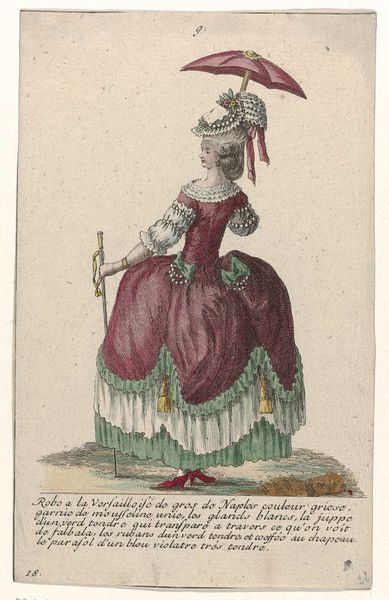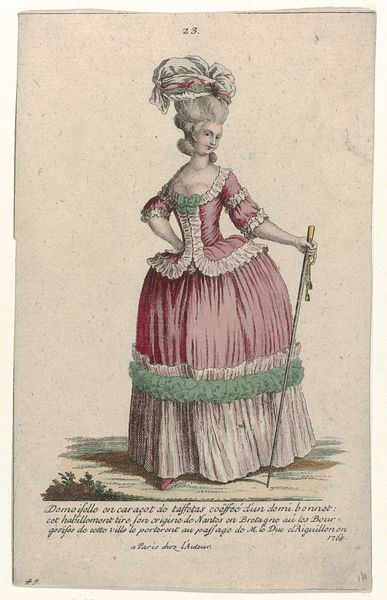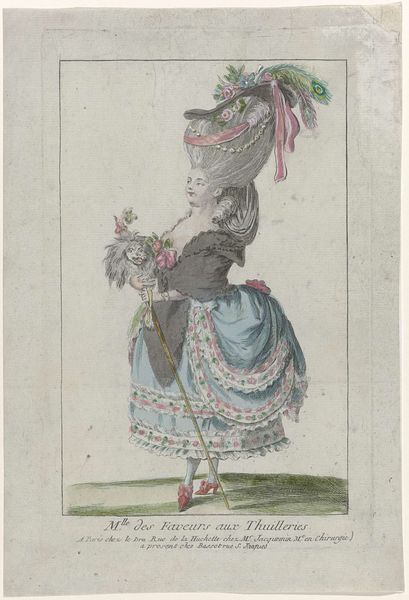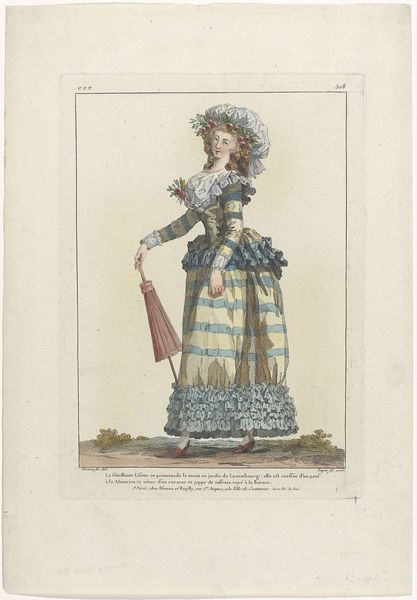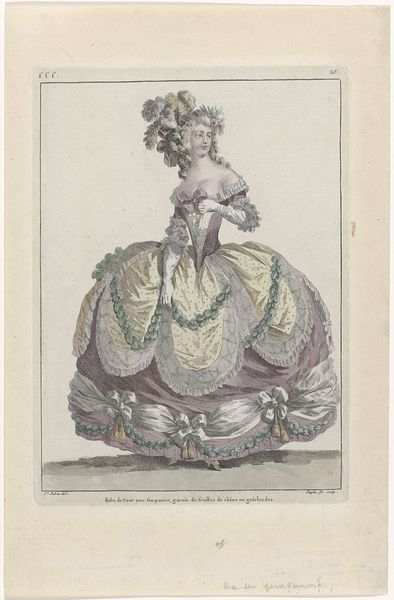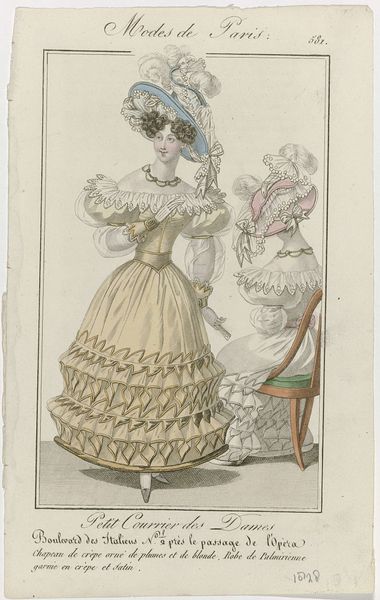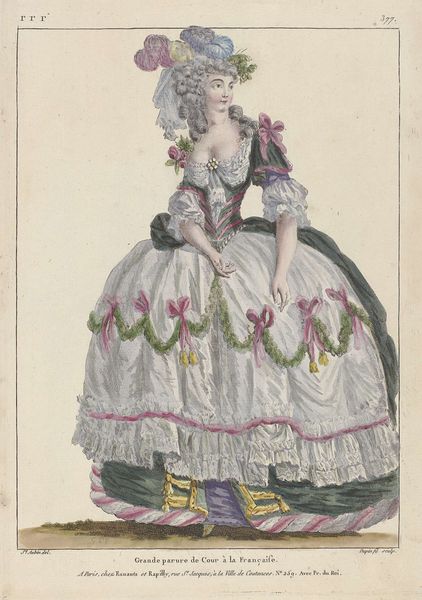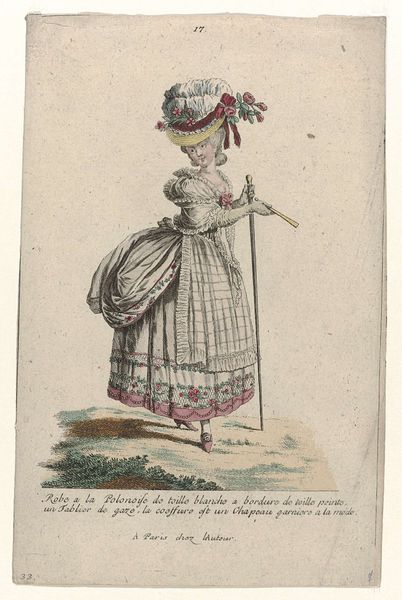
Marie Antoinette: The Queen of Fashion: Gallerie des Modes et Costumes Français 1787
0:00
0:00
nicolasdupin
Rijksmuseum
Dimensions: height 293 mm, width 228 mm
Copyright: Rijks Museum: Open Domain
Editor: Here we have “Marie Antoinette: The Queen of Fashion: Gallerie des Modes et Costumes Français,” a mixed-media drawing from 1787 currently residing in the Rijksmuseum. The colors and form create a sense of aristocratic extravagance; she takes up so much space with that dress. What stands out to you from a formalist perspective? Curator: Immediately, I'm struck by the meticulous construction of this image. The engraving technique, combined with delicate hand-coloring, creates a compelling tension between the two-dimensional surface and the illusion of depth. Note how the artist uses line to define the voluminous dress, contrasting the smoothness of the fabric with the intricate lace trim. Editor: I see what you mean, the dress dominates the image. How does that inform our understanding? Curator: It is not just the dress's size but also its architectural construction, isn’t it? Consider how the panniers create that exaggerated width, while the bodice is cinched tightly, a clear manipulation of the natural form. The arrangement creates this interesting asymmetry with her slight pose, but also an abstract series of triangular forms—the bodice and the underskirt and open overskirt. Note the sharp delineation of colors and how the artist contrasts light and shadow, almost sculptural, creating dramatic movement within the frame. What do you make of it? Editor: It does seem to almost defy gravity. Like an elaborate stage set almost. Now, the colours stand out. Does that influence the structure? Curator: Precisely. Observe how the subtle gradations in the dress's fabric contrast sharply with the pale backdrop, pushing the figure forward and flattening the surrounding space. Even her feathered hat echoes the gown's extravagance. Together, they constitute a statement of luxury and power. It's a fascinating play between the real and the representational, wouldn't you say? Editor: Yes! Analyzing these structural elements really gives another layer of understanding to fashion and its image at that time. Curator: Agreed. Focusing on these details opens doors to appreciating the complex artistic decisions underlying even seemingly straightforward depictions.
Comments
rijksmuseum about 2 years ago
⋮
French queens were expected to set an example in the realm of fashion. As the wife of Louis XVI, Marie Antoinette threw herself into this task with enthusiasm. Together with her marchande de modes Rose Bertin and her hairdresser Léonard, she launched many a new fashion. Court etiquette dictated robes de cour – lavishly embellished gowns with wide skirts. When receiving visitors, Marie Antoinette wore a robe à la polonaise 1 2, but preferred an informal, loose-fitting gown when at her own pavilion in Versailles. This chemise de la reine 3 was quickly adopted by other women of the elite.
Join the conversation
Join millions of artists and users on Artera today and experience the ultimate creative platform.
